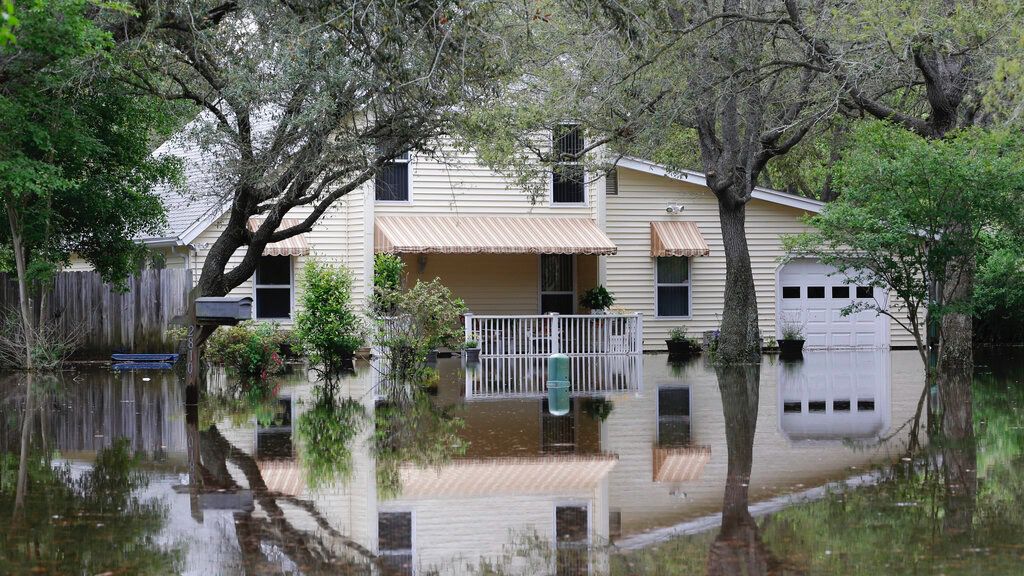Twice as many U.S. homes are at risk of flooding than the Federal Emergency Management Agency estimates, according to a new report from the First Street Foundation. Almost 18 million U.S. properties are at substantial risk or greater.
“Flooding from heavy rainfall events is a dangerous phenomenon that has become increasingly probable and severe in the United States due to climate change,” researchers for the Brooklyn-based nonprofit climate risk group said in their Precipitation Problem report released Monday.
About 20% of the United States can expect a 1-in-100-year storm every 25 years, the report said. Other parts of the country could experience such storms at least every decade.
Parts of southern Indiana could experience storms that dump 2.9 inches of rain per hour every seven years, while parts of eastern Texas could get 4.8 inches of rain per hour during severe storms that are expected every eight years. The First Street forecast found Baltimore, Dallas, Washington D.C. and New York City all face substantial increases in risk compared with the federal government’s estimates.
For every one-degree Celsius the temperature increases, 7% more water vapor is carried by the same air volume, resulting in more intense, long-lasting and frequent rainfall events, First Street researchers said. Scientists have long warned that a 1.5-degree Celsius increase will hamper Earth’s ability to absorb carbon dioxide and could further exacerbate climate change. Nevertheless, it is widely expected that the world will exceed that 1.5-degree threshold within the next five years.
The First Street Foundation utilizes a more uniform and updated type of precipitation modeling than the National Oceanic and Atmospheric Administration, which uses forecasting models that were developed for different parts of the country at different times and do not factor in climate change. While Congress has given NOAA funding to upgrade its precipitation forecasting system with climate change data, it isn’t expected to be complete until 2027.
Before that happens, much of the $1.2 trillion designated in the 2022 Infrastructure Investment and Jobs Act to protect against future flooding will be allocated.
“Without accurate data, infrastructure projects may be based on inaccurate data, leading to wasted taxpayer dollars and inadequate protection against flooding,” the researchers said in the report.
Flooding is the most common and damaging natural disaster in the United States, according to NOAA. In 2021, floods and flash floods caused more than $3 billion in property and crop damage — triple the year prior.
Already, about 25% of flood claims happen in homes outside of high-risk areas, according to the National Insurance Commissioners Assn. While many mortgage lenders require homes in FEMA-designated flood hazard zones to carry flood insurance, few homeowners have it. Only 25% of homeowners said they have flood insurance, according to a 2020 Insurance Information Institute poll.



